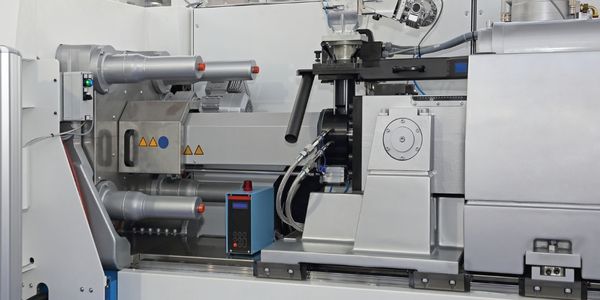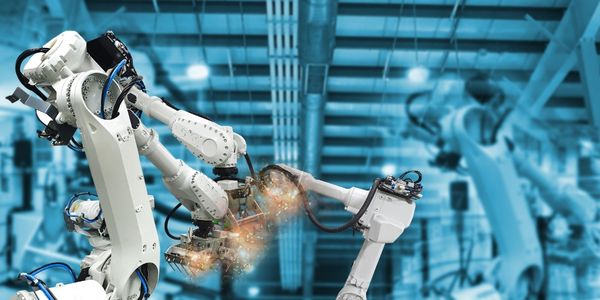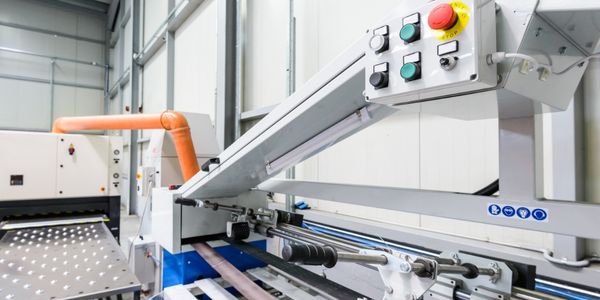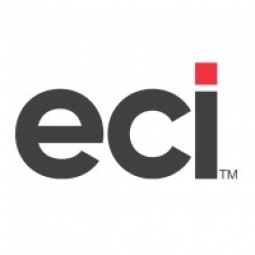公司规模
SME
地区
- America
国家
- Canada
产品
- E2 Shop System
技术栈
- Cloud Computing
实施规模
- Enterprise-wide Deployment
影响指标
- Productivity Improvements
- Customer Satisfaction
技术
- 基础设施即服务 (IaaS) - 云计算
适用功能
- 离散制造
用例
- 自动化制造系统
服务
- 云规划/设计/实施服务
关于客户
KSM Stainless Steel Fabricators Ltd 是一家位于加拿大温哥华附近的公司。该公司与娱乐行业合作,为电视节目和电影制作定制产品。该公司经历了显著的增长,现在的好月份定义为至少有 240 个订单,而 2004 年前只有 120 个订单。该公司目前正在与 CW 电视网的电视节目《绿箭侠》合作。除了娱乐行业的工作外,KSM 还与优秀艺术家和企业合作。
挑战
KSM Stainless Steel Fabricators Ltd 是一家位于加拿大温哥华附近的公司,经常与娱乐业合作,娱乐业对他们的项目时间安排非常严格。每项工作都很匆忙,有时只有几天的时间来规划、开发和制作一件定制作品。在 2004 年实施 E2 系统之前,该公司依赖于手写笔记、电子表格和多个无法很好地协同工作的系统。回答项目状态问题非常耗时,需要工作人员到现场查找订单并与多名员工交谈。
解决方案
2004 年实施的 E2 系统是 KSM 成功的关键因素。E2 系统使该公司能够应对娱乐行业要求的紧迫时间安排。该公司期待实施 E2 商店系统托管版本,该版本有望提供更好、更快捷的搜索功能。这将进一步改善他们的运营和对日常客户查询的响应。E2 系统非常灵活,可以在必要时适应一些“旧方法”,例如让纸张随零件一起运输,以使其不易丢失。
运营影响
数量效益

Case Study missing?
Start adding your own!
Register with your work email and create a new case study profile for your business.
相关案例.

Case Study
Plastic Spoons Case study: Injection Moulding
In order to meet customer expectations by supplying a wide variety of packaging units, from 36 to 1000 spoons per package, a new production and packaging line needed to be built. DeSter wanted to achieve higher production capacity, lower cycle time and a high degree of operator friendliness with this new production line.

Case Study
Robot Saves Money and Time for US Custom Molding Company
Injection Technology (Itech) is a custom molder for a variety of clients that require precision plastic parts for such products as electric meter covers, dental appliance cases and spools. With 95 employees operating 23 molding machines in a 30,000 square foot plant, Itech wanted to reduce man hours and increase efficiency.

Case Study
Fully Automated Visual Inspection System
Tofflon has developed a fully automatic machine that uses light to inspect vials, medicine bottles, or infusion containers for glass fragments, aluminum particles, rubber grains, hairs, fibers, or other contaminants. It also detects damaged containers with cracks or inclusions (microscopic imperfections), automatically removing faulty or contaminated products. In order to cover all production processes for freeze-dried pharmaceuticals, Tofflon needed to create an open, consistent, and module-based automation concept.

Case Study
SAP Leonardo Enabling Rocket Science
At times, ULA has as many as 15 different operating systems dedicated to overlapping processes, such as rocket design, testing, and launch. Multiple systems created unnecessary costs and unwanted confusion among workers at offices, factories, and launch sites in different location. In order to improve collaboration and transparency during vital activities that directly influence mission success, ULA wanted to improve data sharing and streamline manufacturing processes.

Case Study
IIC Smart Manufacturing Connectivity for Brown-field Sensors
The discrete manufacturing domain is characterized by a strictly hierarchical structure of the automation systems, commonly referred to as the automation pyramid. Data acquired by a sensor typically flows through an IO-module into a Programmable Logic Controller (PLC) which manages the local real-time control system. As all process data are concentrated in the PLC, re-programming the PLC and thus, implementing interfaces to access these data appear to be the natural choice to transfer them to the IT system. However, for brownfield installations this choice has proven impracticable for the following two reasons:In brownfield facilities, PLC usually operate within a once-specified environment and are rarely re-programmed. That is why the active staff is often not familiar with the code and lacks of the competence to modify the existing implementation in a reasonable amount of time.Furthermore, for cost reasons, any PLC was selected to exactly match the requirements of the environment within which it was intended to operate. That is why it cannot be assumed that a PLC will be able to support additional tasks such as communicating data through additional interfaces.

Case Study
Smart Factory Solutions for Tobacco Industries: Bridging the Manufacturing Generation Gap and Improving Operational Efficiency
The tobacco industry, represented in this case by British American Tobacco (BAT), is facing a decline in cigarette volumes worldwide. This decline has led to an increased emphasis on efficient supply chains and optimized production processes. The industry is also grappling with the need for agile production facilities and the integration of Industry 4.0 to accommodate diverse production requirements. BAT, in particular, was seeking a factory solution to automate their product control processes, from the transportation of tobacco and cigarette paper to the placement on cigarette machines and the packing conveyor. The company also needed to support the continuous use of legacy equipment, such as relay-controlled cigarette machines dating back to the 90s and AMK servo drive systems, to sustain production levels at speeds of 8000 to 16000 pieces per minute. Furthermore, changing regulatory guidelines necessitated flexibility in labeling requirements.







